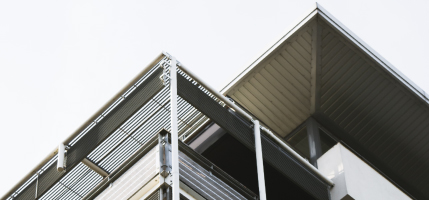A recent report published by the World Bank advised against investment in LNG, branding its role in shipping decarbonisation as limited. LNG provides ready solutions to existing IMO emissions regulations and features several advocates.
However, its long-term use currently remains incompatible with IMO’s 50% reduction of Green House Gases by 2050, owing to methane emissions.
In April 2021, the World Bank published a report advocating against future investment in Liquefied Natural Gas (LNG), and confined its prospective use to a ‘limited’ instead of a ‘transitional’ or ‘temporary’ role. The report was criticised by LNG advocates, such as SEA-LNG, for attempting to ‘prescribe solutions’ and ‘predict the timing’ of future technological developments. Major shipping companies stand divided over LNG’s future role in decarbonisation, with Maersk recently dismissing LNG’s forecast benefits as ‘borderline greenwashing’, while on the polar opposite CMA CGM and Hapag-Lloyd have invested heavily in LNG’s prospects.
LNG Advantages and Disadvantages
The main environmental benefits of LNG compared to oil-based bunkers lie in reduced nitrogen oxides (NOx), sulphur oxides (SOx), and CO2 emissions. LNG consists mainly of methane (CH4). Owing to methane’s higher hydrogen to carbon ratio (4:1), LNG potentially results in 20-30% lower CO2 emissions on combustion compared to oil-based fuels. Moreover, it emits almost zero SOx, and significantly less NOx.
These benefits however are curtailed by potential methane emissions. According to the IMO’s 4th GHG Study, between 2012 and 2018 methane emissions rose by 150%. Much like CO2, methane is a GHG. In fact, its Global Warming Potential (GWP) compared to CO2 is estimated as 86 times higher over a 20-year period, and 36 times higher over a 100 year period. Methane slip, or the emission of unburnt methane gas, can manifest across the entire supply chain, both upstream (extraction, liquefaction and transportation), and downstream (combustion and leakage).
Emissions Regulation
The deleterious impact of airborne emissions to both humans and the environment is now well documented, and regulatory bodies have been taking action. In respect of SOx, the International Maritime Organisation (IMO) introduced a 0.5% sulphur cap as of 1/1/2020 (IMO 2020).
On GHG, the IMO published its non-legally binding Initial Strategy in 2018, featuring goals and candidate measures. The goals envisage a 40% CO2 reduction by 2030, and a 50% GHG reduction by 2050. The candidate measures include further improvements in the Energy Efficiency Design Index (EEDI), which is currently subject to a phased reduction (Phase 1-3), and the Ship Energy Efficiency Management Plan (SEEMP). Two new measures were also adopted in June 2021: a phased reduction in the Carbon Intensity Indicator (CII) of ships of 5,000 GT and above, and introduction of the Energy Efficiency Existing Ship Index (EEXI) rating, ranging A-E.
LNG provides ready solutions to the aforementioned regulations. On IMO 2020, burning LNG is widely seen as one of the three current options for meeting the 0.5% sulphur cap, the other two consisting of burning low-sulphur fuel, and installing scrubbers. On decarbonisation, LNG complies with the 2030 goal of 40% CO2 reduction featuring in the IMO Initial Strategy. Moreover, studies suggest LNG powered vessels can reduce both their EEDI as well as CII by as much as 20%.
At the same time, there is currently no mandatory methane emissions regulation in shipping, though methane emissions do feature in IMO’s Initial Strategy. Specifically, under MEPC 72/17 Annex 11 Para 4.7.5, the candidate short-term measures include to ‘consider and analyse measures to address emissions of methane and further enhance measures to address emissions of Volatile Organic Compounds’. Three different proposals on methane emissions regulation were submitted under the agenda of the seventh Intersessional Working Group on Reduction of GHG Emissions from Ships (ISWG-GHG 7) in 2020, but were not conclusively addressed. Two of these proposals (ISWG-GHG 7/3 and MEPC 75/7/10) centre on all GHG including methane being included as of a potential EEDI Phase 4. The third (ISWG-GHG 7/3) suggests adding methane by means of a CO2-equivalent in relevant measures and guidelines including EEDI.
LNG’s Future Role
The IMO’s 50% reduction of GHG by 2050 goal stands incompatible with LNG adoption in the longer term, as LNG’s main component methane is itself a GHG, which escapes through methane slip. Moreover, major uptake of LNG depends on massive scale bunkering infrastructure being put in place, requiring inter alia major port investment, and significant CAPEX from shipping companies, which in part hinges on bunkering infrastructure and abundant supply. This could push massive adoption of LNG a few years back. Then, one needs to take account of the average lifespan of a vessel, which ranges 20-25 years, and the average delivery of a newbuild, which ranges 2-3 years. Should shipping companies invest in LNG powered newbuilds, they are left with vessels aiming to make good on their investment on average within a decade, and potentially running up to the 2040s, too close to the 50% GHG reduction by 2050 goal. Factor in methane’s significant GWP 20 year potential, envisaged technological improvements in engines leading to reduced methane slip, and a possible introduction of methane emissions regulation through EEDI, and shipping companies are left with tough decisions ahead.
For more information please visit our website microsite on Shipping or contact Mr. Ioannis Generalis at This email address is being protected from spambots. You need JavaScript enabled to view it.">This email address is being protected from spambots. You need JavaScript enabled to view it..
Back to News


